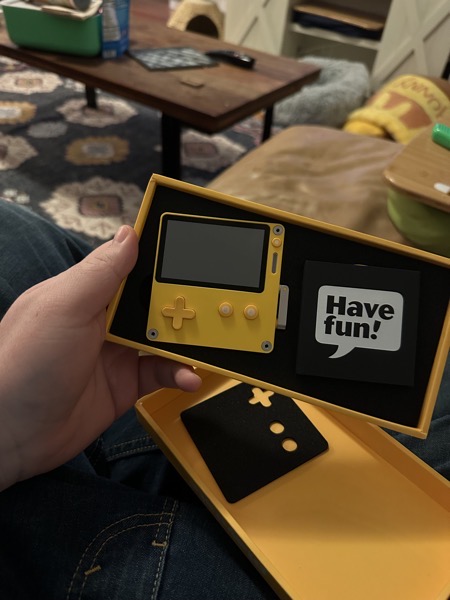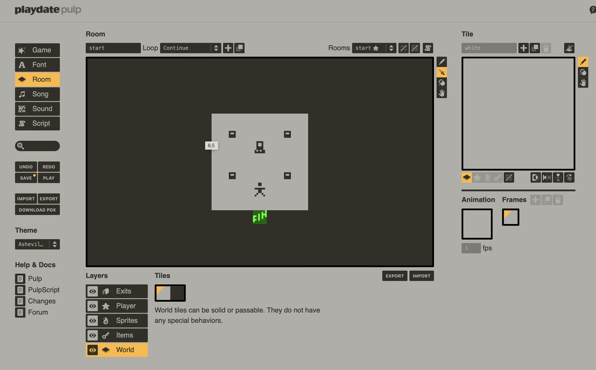
Tech has this long-running tendency to lack restraint, and although this manifests in a lot of ways, one prominent way you can see this is with the continuous parade of half-baked products we constantly bear witness to. Spend some time watching LGR Oddware episode on YouTube and youll see what I mean. You’ll see an entire history of devices made built with technologies that could work together on paper but just barely worked in practice. And so, without anyone at these companies in power willing to ask “is this actually good?”, we get to wander the graveyard of premature tech products that had no business expecting people to buy them, like a device that promised to let you play games using your mind. (No, seriously).
There are companies that do have some restraint, and focus more on making a complete product that’s good as opposed to pushing something out with the latest possible specs they could think of. Apple immediately comes mind; in particular, the iPod comes to mind. It was made of pretty boring off-the-shelf parts and notably underwhelmed the internet with its lack of expected features. But the iPod wasn’t a flop; it was a revolutionary product because Apple took the modest components they had and put them together into a very polished feeling product. Later Apple would go on to do something similar with iPhone, and it similarly underwhelmed naysayers on its announcement.
Nintendo also comes to mind; their systems are well-known for never using cutting edge tech, but instead using some established tech but executed on very well. The NES is such a great video game system that Nintendo still makes NES games available on the Switch, NES consoles from the 80s and 90s are still working today, and there are still a handful of people actively making new games for the system.
The Playdate feels like it takes this idea of taking old tech and mixing it with great execution to the absolute extreme.
The Playdate is a handheld game system made by Portland-based software company Panic. Panic is traditionally known for their Mac apps like FTP app Transmit, but in recent years they branched out, distributing video games like Firewatch and Untitled Goose Game. Playdate was announced in 2019 and although it was initially expected to be available in 2020, availability has been delayed considerably, which is to be expected when you’re new to making hardware while there’s also a pandemic causing unprecedented supply chain complications.
I ordered one for me and one for my partner in 2021, and they arrived this week. Other people have written reviews that will do a better job of enumerating through all the actual aspects of the device, so I’m not going to do that here. Instead, I want to talk about what makes Playdate such a fascinating product to me.
I absolutely love the process by which Playdate was made. Panic has always been a top-tier developer of software for the Mac and iOS, but with Playdate we’ve gotten to see just how great they are at developing. The OS that Playdate runs is not some off-the-shelf OS, but one written by Panic. They worked with Teenage Engineering on the physical design of the device, and the result is something that you know is special the moment you unbox it.
This is what you’re greeted with when you unbox:

Panic built Playdate’s firmware and such, but they also had to build out the SDKs that other software developers could use to make games for it. As a software developer, I can deeply appreciate what a massive evolution it is as a company to go from making apps for a couple of specific OSes, to writing your own Wi-Fi drivers and designing a plastic piece of electronic hardware.
And when you pick up your Playdate and turn it on, it feels like it was effortlessly put together. The tiniest interactions, like when a menu appears when you press the Menu button, feel fluid and tight. The screen, while monochrome, isn’t the primitive LCD screen you remember from the Game Boy, with its ghosting and unresponsiveness; it’s this beautiful display that’s sharp and highly reflective, made (appropriately) by Sharp.
It’s the kind of experience you can offer people when you are using tech with very specific constraints. This isn’t some cutting edge handheld device that has some high-res color display with a powerful 3D chip that needs complicated software to power it; instead, Panic is working with modern but still relatively simple hardware, and they put their ingenuity and design skills into making something that feels engaging even if you know there’s a substantially more powerful system just across the room.
I find something incredibly beautiful about intentionally making tradeoffs with that in tech.
But my absolute favorite thing about Playdate is the relationship Playdate wants you to have with it.
Of course, by default, it comes out of the box as a capable gaming device, and if your only desire is to use games created by other people on it, that’s fine, and you’ll be completely happy doing so.
But the Playdate wants you to make games for it too. They proudly advertise that every Playdate unit is also a development kit, and that it’s easy for you to make your own games and put them on there (or put games from your friends on there). But Panic took it a step further. Not only is there a traditional SDK for making Playdate games, they actually built a beautiful web app called Pulp that allows someone to build games without writing code.

At the risk of sounding like an old curmudgeon, so many of the tech products we are using nowadays are targeted toward mindless consumption. Computers have gotten that way too; it used to be that when you bought a personal computer, it was kind of expected that you’d be making your own software for it. Gradually, that mindset shifted into one where you instead buy software made by professionals. And as much as I appreciate that I make a very comfortable living being one of those professionals, the thing I loved as a child about computers is that they were somewhat approachable. They let you come to them and try to tell them what to do. And as I learned more and more about how software worked and the magic got demystified, I was able to see the world in new ways and I thought about problem solving differently. And importantly, my relationship with my computer is different from most people’s. I see my computer as this incredible power tool that gives me this big lever I can pull at to solve a variety of problems.
I have a feeling that in 25 years we’re going to be admiring some new leader in making some kind of software, and they’re going to tell an interviewer about how they got their start making games for their Playdate, and how they had this “a-ha!” moment the first time they saved a game in Pulp, put it on their Playdate, and actually got to play with something they had just created.
I don’t think Panic wanted playdate to be a sort of political statement on the state of tech; they’re a small company and they knew it wouldn’t be possible for them to make a device that can offer similar specs to something like the Nintendo Switch.
They said no to conventional tech things like stuffing a bunch of super new tech into the device. They said no to typical proprietary bullshit you see from most game systems, like being locked down from running custom games. They even said no to rudimentary stuff, like a color screen. They intentionally made it simpler and they gave themselves the ability to absolutely nail it on the execution, which they did.
And the odd thing is that although it’s obvious in hindsight that great products don’t come from trying to squeeze the most bleeding edge of technology into them, and that tech’s most iconic products are often not using the very latest, we’ll keep seeing impatient tech companies try to squeeze that latest tech in anyway. We’ll see video game makers sinking big budgets into expensive AAA games, when we know from experience that you can build a fun and engaging game in fewer bytes than the HTML version of this blog post probably uses.
